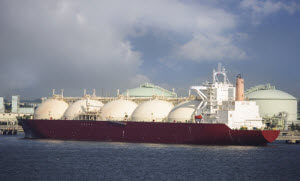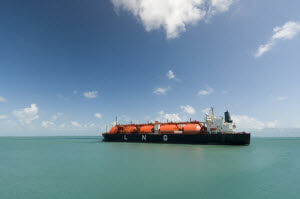Floating Liquefied Natural Gas Production Benefits & Limitations
With Shell constructing the world’s first floating liquefied natural gas (LNG) vessel, floating LNG production processing and storage ships have become a big topic of discussion in the oil and gas industry.
Floating LNG production processing and storage ships offer a way to develop offshore natural gas on the open sea. These facilities extract, process, liquefy, and store gas from the seabed. The vessels also offload the materials to a tanker and are taken to the market.
 Industry experts have mixed views about this new means of production. To help you understand why, here are some of the benefits and limitations of floating LNG production processing and storage ships.
Industry experts have mixed views about this new means of production. To help you understand why, here are some of the benefits and limitations of floating LNG production processing and storage ships.
Benefits of Floating LNG Plants
One of the biggest benefits of floating LNG producing processing and storage ships is that they help to reduce an environmental footprint. Unlike conventional offshore LNG plants, these facilities don’t need transport pipelines to get their materials to the shore. Instead, they do everything from processing to liquefying the gas onboard the vessel and offload the materials to tankers for transport. This reduces land disturbance and decreases the impacts on coastal habitats.
Floating LNG facilities are predicted to open up stranded gas, or gas that’s wasted or unused, as well. Stranded gas is usually located offshore in remote areas that can be difficult to reach for traditional plants. However, the advanced technologies within floating LNG vessels can access these locations to develop the gas in marginal and remote oil fields.
 On top of that, floating LNG plants can provide economic benefits across the world. Additional business opportunities will provide more chances for other countries to develop stranded offshore gas fields in their respective areas.
On top of that, floating LNG plants can provide economic benefits across the world. Additional business opportunities will provide more chances for other countries to develop stranded offshore gas fields in their respective areas.
Most importantly, floating LNG facilities are versatile. Since pipelines aren’t required to get the material to shore, these plants can easily be moved to other locations for more development. Best of all, this eliminates the cost of recycling a structure.
Limitations of Floating LNG Plants
While floating LNG production processing and storage ships offer a number of industry benefits, there are a few challenges and limitations they have to overcome.
Natural forces are one of the most prominent hurdles for floating LNG plants. Since these facilities are stationed on the open water, everything is exposed to harsh elements. For example, during production and storage, wave motion and currents can cause sloshing in partially filled tank, which can lead to spillage.
Plus floating LNG facilities may provide a more cost-effective means of production and transport, but these plants will need specially designed items to ensure proper operation. KPMG states that a specialized LNG containment system will need to be installed to prevent sloshing. On top of that, safe systems for offloading cryogenic liquid will be required to withstand difficult sea conditions. All of these will add to the overall costs of construction.
Additionally, floating LNG facilities will need to implement specific maintenance schedules that can cost time and money because these plants have a limited number of accommodations.
Industry experts may have mixed feelings about floating LNG production processing and storage ships. However, they’ll provide long-term benefits to the oil and gas industry. So it’s possible to see more floating LNG facilities in the future.
Visit CPV Manufacturing’s blog for more information and news about the oil and gas industry.

